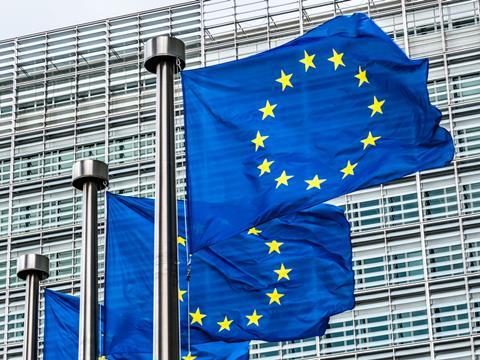
European Bioplastics, an association representing the bioplastics industry in Europe, recently announced the appointment of Maria Negut as its new Head of EU Affairs. Her job will be to convince EU decision-makers that bioplastics can play a vital role in helping them to achieve their climate goals. We spoke with Negut to learn more about the arguments her organisation will be using in its attempts to make this happen.
To start us off, could you introduce yourself, talk a bit about your background, and tell us more about your new role?
My name is Maria Negut and I am working at European Bioplastics as Head of EU Affairs. I have a background in political sciences, European affairs and diplomacy, having worked in and with the EU Institutions since the beginning of my career.
In my role as Head of EU Affairs, I will be the bridge between our member companies and the EU decision-makers, to ensure we speak with one voice when it comes to advocating for our interests. With the strong focus on the European Green Deal – which has many deliverables such as: achieving climate neutrality by 2050, reducing waste, transitioning from a linear to a circular economy and from a fossil-based to a renewable-based economy – my role will be to highlight to the EU policymakers that bioplastics have tremendous potential and a clear role in defossiling the EU economy and in achieving the EU ambitions for climate neutrality.
Efficient communication will also be an essential part of my role for EUBP in Brussels. Communicating with the different EU Institutions and Permanent Representations of EU Member States on bio-based, biodegradable and compostable plastics will be key, in order to provide clarity on what our industry is, the variety and versatility of bioplastics, and how our members are leaders in terms of innovative products that are truly circular.
In this regard, I will ensure that bioplastics’ visibility is enhanced, as they represent an economically innovative sector that is growing fast, between 20% - 100% per year. However, success is largely based on political and public backing, and this is where my role will be crucial. I will advocate for a long-term policy framework that supports and strengthens the use of bioplastics in the EU economy, without barriers to market access and with financial incentives for innovation and R&D.
What have you identified as the key challenges you’ll be confronting in your new role?
With challenges, opportunities also arise. One of the challenges I will be confronted with is the lack of proper understanding of what bioplastics are and how they are using renewable resources without competing with food or feed production. This is where I feel that the understanding is still missing. Furthermore, the enthusiasm of policymakers about renewable alternatives remains to be seen – the understanding and appreciation for innovative science, which is a prerequisite for the circular economy, needs to be better developed, because only with the understanding of what innovative science is will we have a good basis for discussion and policy development which is fit for purpose and supports the European industry.
I joined European Bioplastics at a key moment when a series of policy developments are being decided: the revision of the Packaging and Packaging Waste Directive, the creation of a policy framework for bio-based, biodegradable and compostable plastics, the revision of the Waste Framework Directive, the Sustainable Products Initiative and the ecodesign for sustainable products Regulation, and the need for substantiating Green Claims – to name just a few. The regulatory framework is increasingly complex, and to navigate in the EU, the decision-making process requires a lot of focus and determination.
Challenges will be linked to legitimate concerns on the sustainability of the raw materials, the use of resources, and pressure on biodiversity. Moreover, another challenge will be the need to change the perception on waste – what we have previously seen as waste should be seen as valuable resource to make things we need in our daily lives. At the same time, without proper investment in innovation & research, and with the risk of an increasingly over-complicated regulatory framework in the EU, we risk damaging an industry that is still in its infancy phase when compared to conventional plastics.
Harmonization of EU legislation will be another challenge, as we see that some Member States develop their own national legislation which is not aligned with other countries and with what is happening at Commission level in terms of legislative proposals. All these different measures across the EU are potentially harming innovation and creating an increasingly complex environment for companies to operate in. Therefore, I will be strongly advocating for harmonization of legislation and for eliminating barriers to innovation.
Could you give us a brief overview of the bioplastics packaging market as things stand in 2022, and discuss the current regulatory outlook?
Packaging represents of course one of our main markets for bioplastics use, and the trend for 2022 is that the bioplastics packaging market is expected to grow significantly. Despite now representing only a very small share of the global plastic packaging market value, it will more than double in value by 2022 compared to 2017.
However, one challenge remains on the commercial adaptation of bioplastics for packaging: market acceptance. Extending the area of applications for bioplastics packaging should be a priority for 2022, for example, to increase its use to food categories – currently being the second-largest end-use sector after non-food.

The current regulatory outlook presents itself as a very busy one, in which sustainability is central. The EU is currently in the process of reviewing the Packaging and Packaging Waste Directive, while at the same time preparing the first-ever policy framework for bio-based, biodegradable and compostable plastics. Moreover, the Commission published a couple of days ago, on the 30th of March, the proposal for a Regulation on the ecodesign for sustainable products as part of the Sustainable Products Initiative.
We know that the EU wants to tackle the issue around overpackaging and waste – notably given the fact that we are still well behind the targets of reducing waste, with packaging being identified as a driver of waste accumulation. In this regard, packaging waste from e-commerce is one main point of criticism from consumers and policymakers. Online shopping packaging waste has boomed in the pandemic, and regulators are keen in ensuring that strict measures are taken to find a solution.
Another point that is very important is the need for investments in the bioplastics packaging sector, which involves bringing the financial sector in the discussion. Why I am mentioning this here as a response to your question on the regulatory outlook? Well, with the EU Taxonomy Regulation for sustainable activities which entered into force on 12 July 2020, companies will have access to the EU list of “green sectors“ in which investments are recommended from a sustainability point of view. According to the first delegated act of the EU Taxonomy Regulation, bio-based plastics are considered to be green investments by the EU as they are seen as substantially contributing to climate change mitigation – this inclusion can have tremendous impact on the market demand.
What are the core arguments you’ll use in your attempts to convince EU policymakers that bioplastics can help them to realise their sustainability goals?
Bioplastics are an innovative industry with a dynamic growth rate and immense environmental, social and economic potential. With the right framework conditions in place, bio-based plastics produced in the EU could grow to more than 5 million tonnes per year (approximately 10% of plastics production in the EU), which would translate to 160,000 jobs.
The EU expressed concerns on the sustainability of the raw materials used to produce bio-based plastics and the land use and land use change. European Bioplastics repeatedly highlighted to EU policymakers that the growing of feedstock for bio-based plastics’ global annual production relies on only 0.01% of the global agricultural area, therefore, there is no competition for land for the production of food and feed.
Furthermore, even if our sector is expected to grow substantially, the land use will only grow to a maximum of 0,6% of the total global land use for agricultural production which is currently 5 billion hectares.
Another argument that we are using in our advocacy towards the EU is that compostable plastics can contribute to stronger secondary raw material markets (compost) with a focus on organic recycling. Every year, about 100 million tonnes of biowaste are not collected. Compostable plastics can help to collect this unused potential and thereby create 20.000 jobs in the waste management sector.
Furthermore, bio-based plastics used in packaging offer one outstanding advantage over fossil-based products: the use of renewable resources and, by consequence, the intrinsic value proposition of reducing the environmental impact of packaging in terms of CO2 emissions.
Lastly, with the ongoing geopolitical developments, we have seen that there is an urgency to break away from fossil-fuel-based materials. Therefore, bioplastics are ready to play an important role – if the proper financial incentives for innovation, R&D support, and fit-for-purpose regulatory framework are in place.
While we report on a number of bioplastic innovations each year, a considerable proportion never reach industrial scale. Why is this the case, and what can be done to ensure that more bioplastic packaging products are scaled and seen as commonplace in everyday life?
Your question is exactly what we, as an association want to highlight to the EU: the need for a supportive regulatory framework for our products and more financial incentives for innovative products being placed on the market. Innovation takes time and it is costly. At the same time, if a company develops an innovative product but then has barriers in entering the EU market, the incentive to continue innovating will be lost.
A supportive policy framework for the circular and biobased economy along the value chain is crucial to the development of a strong and robust bioplastics sector. To reinforce the EU’s position as a front-runner of resource efficiency and green growth, we need to address legal and market barriers hampering the uptake of bioplastics.
Furthermore, creating equal access to sustainably grown and affordable bio-based feedstock for bio-based products is crucial, so that EU Member States can attract investments from global bioplastic companies
EUBP calls on the Commission to encourage Member States to implement measures that promote packaging made from bio-based materials, thereby contributing to a genuinely competitive and highly innovative bioeconomy.
Finally, in order to make use of the full potential of the bioplastics sector, economic measures that promote the market introduction of products with bio-based content and products that offer additional waste management solutions, such as organic recycling, should be considered.

















No comments yet